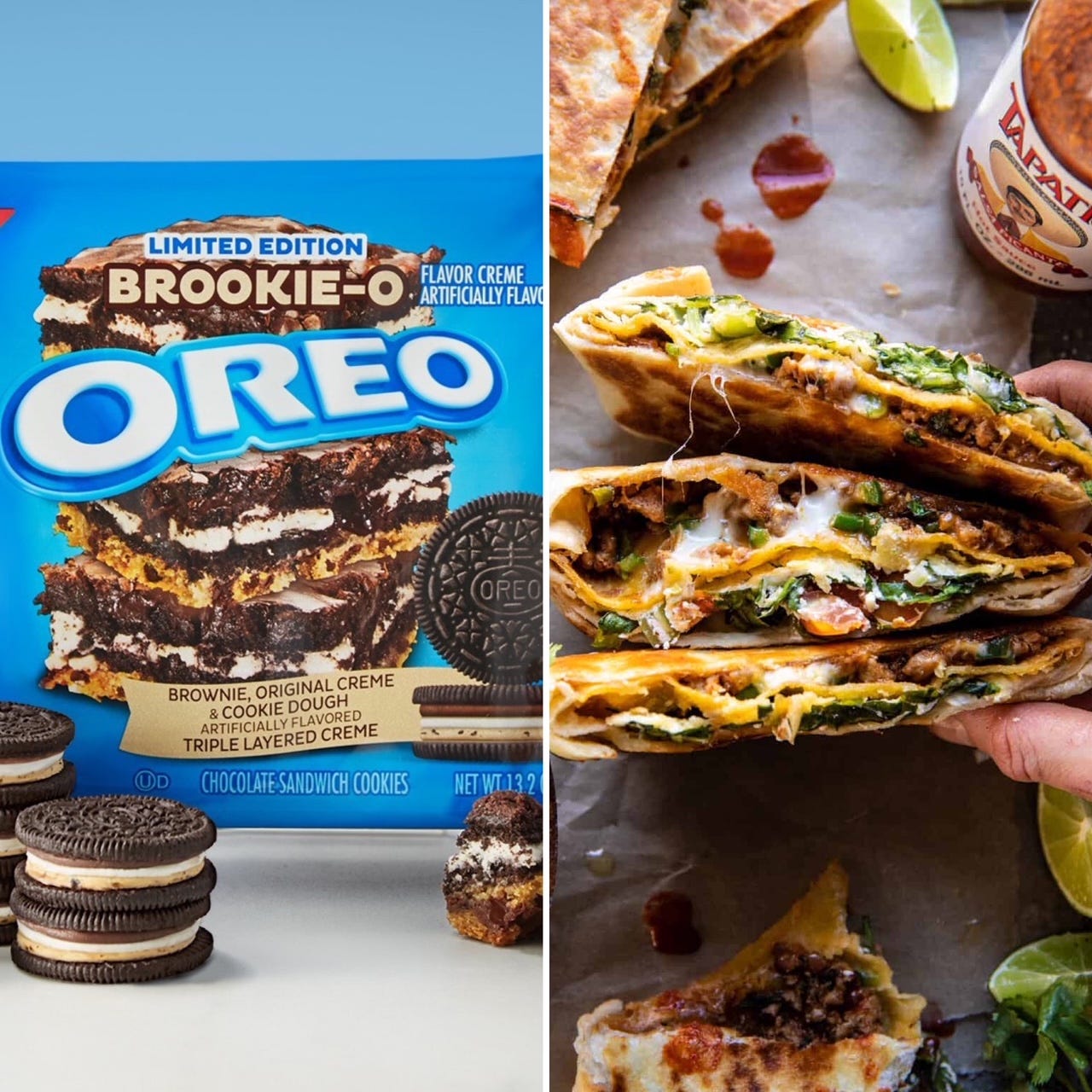Issue 20: Is Rage Just Pain in Disguise?
Plus: a new way to manage anxiety, a Taco Bell DIY, and a TV show that is a *ball* to watch
Hi! If you’re new here, you can head to the about page to learn more about me and this newsletter. So happy to have you!
Thanks, as always, for being here, and for continuing to share WM with friends; I cannot understate the joy it brings when a new subscriber alert hits my inbox.
Tiny offerings for the year ahead.
Worth Considering: Is Rage Just Pain in Disguise?
It feels trite to say I’ve been emotionally overwhelmed by the events of the Capitol riots two weeks ago, but it’s also true.
By the end of November, I had managed to pull myself away from my election cycle news addiction, when the outlandish and unfounded “stop the steal” rhetoric played on a monotonous loop and I no longer felt anxiety by not seeking out updates every 15 minutes. But the historic events of January 6th pulled me back into the undertow of endless articles, tweets, op-eds and hot takes, drowning in horror while simultaneously bobbing my head above water in vain, willing myself to spy a rescue boat teetering on the horizon.
Fourteen days later, I’ve finally washed onto a rocky shore, my body weighed down with soaking wet clothing, my lungs like semi-dried out sponges, ocean debris still nestled in the crannies of my toes.
No matter how much media I’ve consumed these last two weeks, I won’t truly understand, both logistically and psychologically, how the breakdown of our democracy came to fruition that day. I’ve indulged my primal outrage, played and replayed the graphic videos, and spent too much time and energy trying to unpack the propaganda and conspiracy theories that have led us to this point. None of it helped. It left me with as many questions as I had answers.
Over the course of my 11-year relationship with my husband, I’ve come to understand something that I now know to be true: anger is an emotion we rely on to mask pain, sadness and hurt. I’m not convinced anger is a sentiment we feel independently; I believe it’s purely the symptom of a deeper, more profound emotion—typically one that requires vulnerability to recognize and express. Think about the last time you were angry—over something large or small. The other day, I was angry at Kyle for going to the gym after work and leaving me to perform our toddler’s dinner, bath and bedtime routine alone, after an already long 10 hours together. I mentally read Kyle the riot act, letting my anger fester and balloon into something bigger than it was. But was I actually mad? Not really. I was frustrated that he hadn’t considered my needs; I was lonely and depleted. But I wasn’t angry.
So was the same true of my feelings towards the rioters—the insurrectionists masquerading as patriots? Was I infuriated at the government leaders who encouraged such behavior? Was I angry at the widespread dis- and mis-information that so easily spurred and spread a dangerous movement? Or was I reeling from pain and sadness at the state of our nation and its people?
The truth is, it feels good to be angry. It’s self-indulgent. It fires up our adrenaline, speeds up our heart rate and readies our fists to fight. We believe it gives us permission to spiral and talk ourselves into a perceived righteousness. But unharnessed anger (which, ultimately, is an amalgamation of deep, tender vulnerabilities) leads to fractured and disconnected relationships, self-loathing after anger-fueled episodes, and—like we saw at the Capitol—violence without constraint.
Once I recognized my own vulnerable emotions, I felt better sitting with the disappointment and hurt than I did with my false anger over the events at large. But I also realized the same framework needed to be applied to the rioters themselves, each member of the mob we witnessed on TV. They were clearly angry—but what lay beneath that anger? Was it their own version of disappointment? Was it the displacement of felt powerlessness? Was it the manifestation of a seemingly unrelated, unresolved personal pain? Was it our country’s—our president’s—deeply-sowed belief that emotions other than anger and rage (like despair, fear, grief and pain) are viewed as weak, shameful character flaws to be hidden at all costs?
It’s easier to bear witness to acts of malice and hatred through the lens of anger—to immediately characterize a person as a narcissist, an egomaniac, an evil, vile being. To attempt to soften and unfurl the kinks in someone’s character, to see the bruises and scars beneath the slogans and costumes and armor is much more difficult. It requires our own vulnerability in an attempt to unearth theirs. But I believe it’s the only way forward. We cannot sit in anger forever; we cannot allow it to be the sole emotion that drives action and healing.
To be clear: I’m not excusing the hateful language or violence that took place; that absolutely demands accountability. And it also demands introspection into how we got to where we are, how a vast community of people have come to worship the dogma of rage, and how each individual’s past led them to their current reality. We must peel back the layers to discover what lies underneath. Any other solution will be but a Band-Aid covering a gaping, bleeding wound.
I’m hopeful for tomorrow’s inauguration—that it will be a new beginning, symbolically and otherwise. I have many expectations for our president and vice president-elect, from policy changes to a more unified Congress. But I think my greatest hope is for a relentless display of vulnerability from our new leaders—giving us all the permission to trade anger for honesty, hatred for compassion, and separateness for unity—at last.
Related reading: Brené Brown and Marc Brackett on Emotional Intelligence - Forbes. “[Recognizing emotions] is especially difficult because we’ve been trained to fake, repress, or ignore our feelings and, additionally, because we often confuse a behavior for a feeling. Shouting, for instance, may be a symptom of shame, but it could be perceived by others as anger. It’s important to ask yourself, what emotions can you recognize in yourself and in others?”
Worth Watching: Ted Lasso - Apple TV+
Chances are I am not the first person you’ve heard singing this show’s praises, but I must reiterate: this show is a damn delight and exactly what we all need right now. Jason Sudeikis plays a midwestern football coach recruited to the UK to coach for AFC Richmond, a struggling soccer team in the English Premier League. It is perfectly casted, witty and smart, and will make you feel things—good things!—each and every episode. A charming, endearing 30 minute gem of a show that you’ll savor, wishing it could last forever. (If you don’t have Apple TV+, you can start a free trial and easily knock out the 10 episodes in a few days.)
Worth Clicking: How to Worry More Mindfully - NYT
Almost every night lately I’ve been waking up at 3am, where for anywhere from 20 minutes to 2 hours my mind will not stop. From the mundane cataloguing of the things I forgot to buy at Target (dry shampoo) to more worldly concerns (deep existential dread), I process my worries on loop. Rather than denying or ignoring our anxieties, the author proposes we accept them, schedule time for them, and manage them mindfully. Ambient music and counting backwards from 100 is decidedly not working, so I’ll try anything?
Worth Listening: Words, Actions, Dehumanization and Accountability - Unlocking Us with Brené Brown
As mentioned above, accountability is key to repairing the wounds of our country. This discussion on that topic—along with the ways in which dehumanizing others leads to radicalization and violence—was incredibly interesting and will change the way you think about and use language in your everyday life.
Worth Reframing: “I can’t imagine what you’re going through.”
What feels like a long time ago, I read an argument against the phrase “I can’t imagine what you’re going through” when trying to show compassion for someone during a difficult time—and it’s really stuck with me. Though your intention with these words is likely to not impose your own presumptions of their unique pain, what you’re really saying is: “I will not allow myself the discomfort of trying to experience your deep and profound grief.” You’ve removed empathy from the dialogue; you’ve constructed barrier between yourself and the other person, each on opposite shores. Rework the sentiment into something that gives way to compassion and empathy—whatever that is for you. “I can’t truly know your deep pain, but I promise to be a witness as you walk through it” or maybe simply, “I’m here.”
Worth Cooking: Homemade Crunchwrap Supreme - Half Baked Harvest
This isn’t the first time I’ve shared a HBH recipe and it will certainly not be the last! I made these this week and Kyle said they are better than Taco Bell—which, impossible, but I appreciated the sentiment. Plus, they’re easy enough for a weeknight meal.
Worth Impulse Buying: Brookie Oreos
I will buy basically anything labeled “seasonal” or “limited edition”—I am a true marketer’s dream. Though I’m usually let down by Oreo’s one-off flavors, their new Brookie variation is so. good. We went through a package in a week and I’m off to Target to replenish them tomorrow. Available at Target, Walmart and for a huge markup on Amazon.
Worth Quoting: Jack Kornfield
“The world is full of pain, uncertainty, and injustice. But in this vulnerable human life, every loss is an opportunity either to shut out the world or to stand up with dignity and let the heart respond.”






